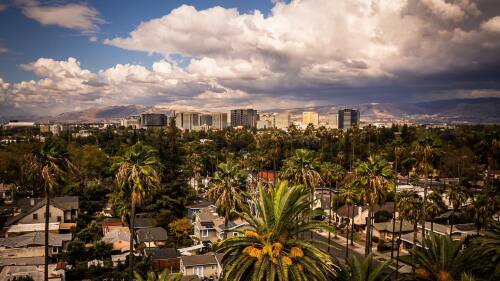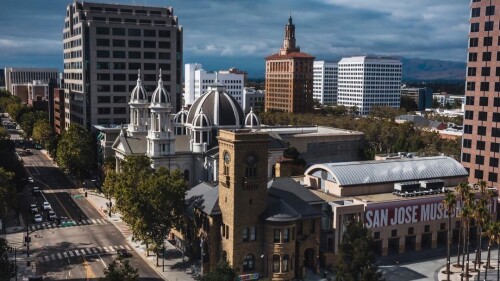A San Jose by any other name would still be as sweet... right?
Given how many nicknames San Jose boasts, it’s surprising to realize that San Jose’s official name has had several variations through the centuries.
Today, we’re taking you through the many historical names our city (and its land) has known.
An indigenous past + present
Since 10,300 years ago, this land was home to several indigenous groups — broadly known as the Ohlone — who called the region Thámien.
Due to Spanish colonization, many original, indigenous placenames were lost, but according to SJSU’s Anthropology Lecturer Emeritus Alan Leventhal, many names would have focused on places of importance and would have varied from tribe to tribe.
Since the 1970s, the Muwekma Ohlone have worked with local anthropologists to rename local sites in their traditional languages. For example, the Coyote Hills would translate to “Máyyan Šáatošikma.”
The Spanish legacy
In 1777, Captain Juan Bautista de Anza selected a site along the Guadalupe River for a Spanish civilian settlement named “El Pueblo de San José de Guadalupe,” referencing:
- St. Joseph — the Catholic patron saint of pioneers + travelers.
- The Guadalupe River — whose namesake, the Virgin de Guadalupe, was the patron saint of the de Anza expedition.
By the 1800s, print publications started simplifying the name to “San José” for the city and the nearby township.

The first official flag of San Jose (1969-1984) was designed by History San José founder — Clyde Arbuckle — and featured “San José” with an accent.
Photo via Wikimedia Commons
To é or not to é
On Dec. 11, 1943, the United States Board on Geographic Names removed the accent based on local usage + the formal, incorporated name.
However, in the 1960s and 1970s, residents and officials argued that the accent should be returned to honor the city’s Mexican origin and large Mexican-American community.
While City Council flip-flopped due to the cost of changing documents + signs, it eventually adopted the accent in 1979, which is still its official policy today.
These days, both the accent and non-accented version are equally used around town. So, we’re curious... Which version do you prefer and why? Let us know.











